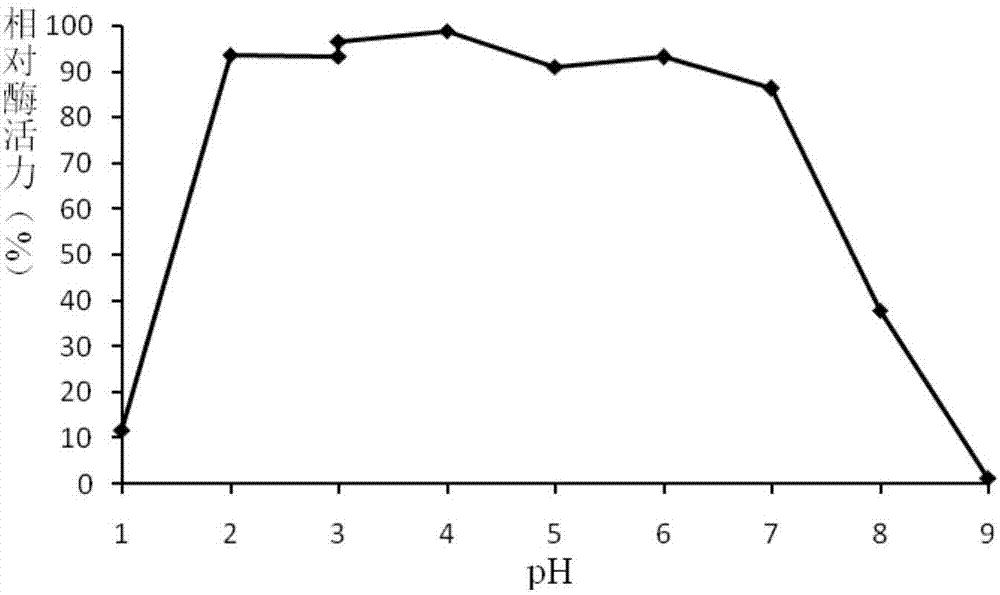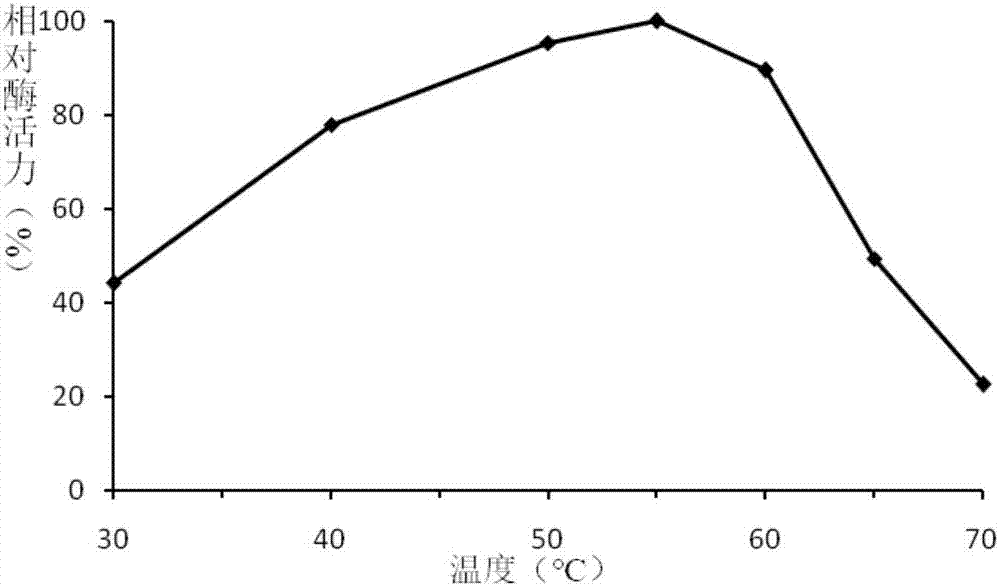Fungus-derived acid protease 6749 as well as gene and application thereof
An acid protease, gene technology, applied in the field of genetic engineering, can solve the problems of reduced catalytic efficiency, heat intolerance, limited application scope, etc., and achieve the effects of high activity, excellent properties, and high reaction temperature
- Summary
- Abstract
- Description
- Claims
- Application Information
AI Technical Summary
Problems solved by technology
Method used
Image
Examples
Embodiment 1
[0049] Cloning of embodiment 1 protease coding gene 6749
[0050] Thermoascus crustaceus genomic DNA was extracted and stored at -20°C for later use.
[0051]Synthetic amplification primers were designed, and the total DNA of Thermoascus crustaceus was used as template for PCR amplification. The PCR reaction parameters are: 95°C for 5min; 35 cycles of 94°C for 30sec, 60°C for 30sec, 72°C for 2min, and 72°C for 10min. A fragment of about 1800bp was obtained, which was recovered and sequenced.
[0052] Table 1 Primers required for this experiment
[0053]
[0054] Extraction of total RNA from Thermoascus crustaceus using Oligo(dT) 20 and reverse transcriptase to obtain a strand of cDNA, then design primers F and R (see Table 1) for amplifying the open reading frame, amplify the single-stranded cDNA, obtain the cDNA sequence of the protease, and sequence the product after amplification .
[0055] The full-length cDNA sequence of acid protease 6749 is 1185bp, encoding 394 ...
Embodiment 2
[0056] The construction of embodiment 2 protease engineering strains
[0057] (1) Construction of expression vector and expression in yeast
[0058] Using the correctly sequenced cDNA of protease 6749 as a template, primers F and R with EcoR I and Not I restriction sites were designed and synthesized (see Table 1) to amplify the coding region of the mature protein of 6749. And use EcoR I and NotI to digest the PCR product, connect it into the expression vector pPIC9 (Invitrogen, SanDiego), the sequence of the mature protein of protease 6749 is inserted into the downstream of the signal peptide sequence of the above expression vector, and form a correct reading frame with the signal peptide, construct The yeast expression vector pPIC9-6749 was transformed into Escherichia coli competent cell Trans1. The positive transformants were subjected to DNA sequencing, and the transformants with the correct sequence were used for large-scale preparation of recombinant plasmids. Lineari...
Embodiment 3
[0062] The preparation of embodiment 3 recombinant proteases
[0063] (1) Mass expression of protease gene 6749 at shake flask level in Pichia pastoris
[0064] The transformant with high enzyme activity was screened out, inoculated into a 1L Erlenmeyer flask with 300mL of BMGY liquid medium, cultured on a shaking table at 30°C at 220rpm for 48h; centrifuged at 5,000rpm for 5min, discarded the supernatant gently, and then added 100mL containing 0.5% methanol BMMY liquid medium, 30°C, 220rpm induction culture for 72h. During the induction culture period, add methanol solution once every 24 hours to compensate for the loss of methanol, and keep the methanol concentration at about 0.5%; (3) Centrifuge at 12,000×g for 10 minutes, collect the supernatant fermentation liquid, detect the enzyme activity and perform SDS-PAGE protein Electrophoretic analysis.
[0065] (2) Purification of recombinant protease
[0066] The recombinant protease supernatant expressed in the shake flask ...
PUM
 Login to View More
Login to View More Abstract
Description
Claims
Application Information
 Login to View More
Login to View More - R&D
- Intellectual Property
- Life Sciences
- Materials
- Tech Scout
- Unparalleled Data Quality
- Higher Quality Content
- 60% Fewer Hallucinations
Browse by: Latest US Patents, China's latest patents, Technical Efficacy Thesaurus, Application Domain, Technology Topic, Popular Technical Reports.
© 2025 PatSnap. All rights reserved.Legal|Privacy policy|Modern Slavery Act Transparency Statement|Sitemap|About US| Contact US: help@patsnap.com



